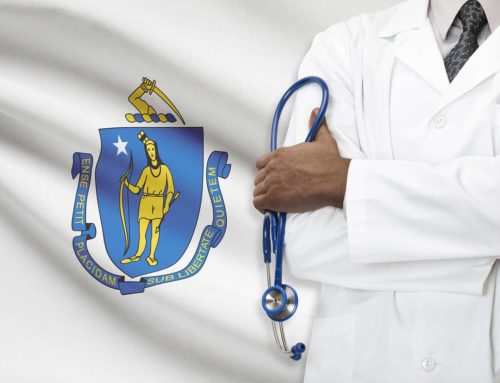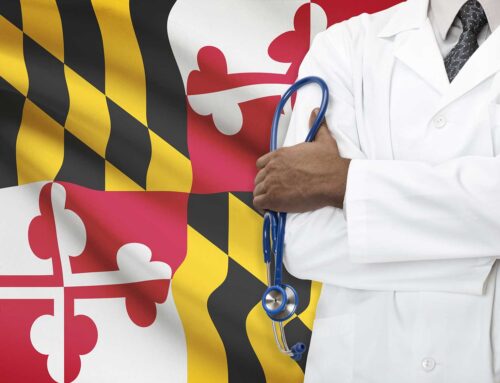Get A Quote
Missouri Medical Professional Liability Insurance Market Summary
Doctors in Missouri have several good options for medical liability insurance. The top insurers in the state are:
These insurance carriers all have an A-rating from independent insurance rating company A.M. Best. This A-rating ensures that each company listed above has a verified history of providing robust financial and legal support for physicians. There is no set standard insurance rate per specialty across insurers – each carrier uses proprietary methodologies to set their own rates.
Medical malpractice insurance premiums for physicians in Missouri are moderately priced. Like all states, Missouri has enacted several tort reform policies in an effort to stabilize the medical malpractice insurance marketplace and entice doctors to practice in the Show-Me State, but even in 2021, litigation continues over the constitutionality of such laws.
Medical Malpractice Insurance Requirements for Missouri in 2023
Medical professionals in Missouri are not required by law to obtain malpractice insurance. However, hospitals and other healthcare facilities mandate that physicians carry medical malpractice insurance while working in their facility. Typically, Missouri physicians carry limits of $1 million per occurrence or claim and $3 million per annual aggregate. Limits may be lower depending on the county where the practice is located. High-risk specialties like surgery or Obstetrics/Gynecology may need policies with higher liability limits.
Even in states where medical malpractice coverage is not mandated, most doctors choose to carry liability coverage. Malpractice insurance shields you from multiple factors in the event of a lawsuit, including any attorney’s fees and monetary damages that are awarded to the plaintiff.
The best way to protect your practice is by partnering with an independent insurance broker that can help you find the right coverage from an A-rated insurance carrier, tailored specifically to your specialty or practice situation.
Medical Malpractice Insurance and COVID-19 in Missouri
Missouri has been hit hard by the COVID-19 pandemic, due in part to a low vaccination rate across the state. In early July 2021, the US government announced they were sending a “surge team” composed of various healthcare professionals to “assist with data and research, vaccine uptake strategies and outreach” due to a rise in cases of the Delta variant, and CNN reported that CoxHealth in Springfield had begun transferring positive patients to other facilities with better staffing.
To be able to respond confidently to the changing needs of patients during the COVID-19 pandemic, Missouri doctors are encouraged to have a comprehensive policy in place from a top-rated medical malpractice insurance carrier.
Telemedicine in Missouri
While many states needed the COVID-19 pandemic to kick start their telehealth programs, Missouri was already far ahead of the crowd. The Missouri Telehealth Network has been providing specialized healthcare services to rural and underserved residents across the state since 1994, first partnering with telecommunications companies and then later receiving federal and state grants.
Considered a national leader in telemedicine, Missouri actively seeks to make telehealth tools readily available for medical professionals, which is crucial to providing specialized care to rural individuals in the state as it reduces transportation time and costs and increases access to physicians. In 2018, the state passed Missouri House Bill Number 1617, allowing telemedicine to be used for patients in most settings and by any licensed “health care provider,” stipulating only that the same standards of care apply as in person visits.
Missouri has used telehealth technologies for the past 25 years, but has seen a dramatic uptick in use for the past five to ten years. Today, nearly every major health system in the state has adopted some form of telehealth, and telehealth advocates continue to look for opportunities to improve access, such as improving rural access to broadband internet.
Legal liability is a common concern for physicians using telemedicine, and it’s likely that the number of malpractice suits will increase as telehealth becomes more widely used. Since physicians are generally held to the same standard of care regardless of whether they are practicing via telehealth or in-person visits, it is recommended that doctors carry insurance that specifically covers telemedicine. If you are unsure of what your policy covers, consult with your insurance broker.
Malpractice Insurance Rates for Missouri Doctors
Missouri rates for malpractice insurance are moderate compared to the rest of the country. See below for approximate rates across all territories for limits of $1,000,000 Each Claim/$3,000,000 Aggregate (the most common limits of liability in Missouri).
| Specialty | Average Rate |
|---|---|
| Anesthesiology | $18,000 |
| Cardiovascular Disease Minor Surgery | $21,000 |
| Emergency Medicine | $34,000 |
| Family Practice No Surgery | $15,000 |
| General Surgery | $48,000 |
| Internal Medicine No Surgery | $16,000 |
| Neurology No Surgery | $21,000 |
| Obstetrics and Gynecology Major Surgery | $71,000 |
| Occupational Medicine | $11,000 |
| Ophthalmology No Surgery | $11,000 |
| Orthopedic Surgery No Spine | $44,000 |
| Pathology No Surgery | $13,000 |
| Pediatrics No Surgery | $13,000 |
| Psychiatry | $11,000 |
| Radiology – Diagnostic | $19,000 |
Tort Reform in Missouri
Like all states, Missouri has enacted several tort reform policies in an effort to stabilize the medical malpractice insurance landscape and reduce malpractice litigation, and the war over damage caps in the state continues to rage on into 2021.
The state enacted its first cap on damages in 1986 after insurance premiums increased by a whopping 131% in 1981. In the early 2000’s, premiums began to creep up again, and several large insurance carriers either became insolvent or left the state market. After a decade and a half of legislation aimed at bringing medical providers back into the state, lawmakers passed bipartisan legislation in 2015 that capped noneconomic damages for both catastrophic and non catastrophic injuries. In 2021, Missouri’s State Supreme Court is expected to decide whether or not the 2015 law is constitutional.
Missouri’s Damage Caps on Medical Malpractice Lawsuits
Missouri passed a law in 2015 capping noneconomic damages (reimbursement for pain and suffering, loss of life enjoyment, etc.) in medical malpractice cases at $400,000 for non catastrophic injuries and $700,000 for catastrophic injuries, with an annual 1.7 percent increase each year. Catastrophic injuries are defined by state law as “an injury resulting in quadriplegia, paraplegia, the loss of two or more limbs, significant and permanent cognitive impairment, irreversible failure of a major organ, or significant loss of vision.” The damage caps for Missouri are projected as follows:
| Year | Non Catastrophic | Catastrophic |
|---|---|---|
| 2021 | $442,574 | $774,504 |
| 2022 | $450,098 | $787,671 |
| 2023 | $457,749 | $801,061 |
| 2024 | $465,531 | $814,679 |
| 2025 | $473,445 | $828,529 |
| 2026 | $481,494 | $842,614 |
| 2027 | $489,679 | $856,938 |
| 2028 | $498,003 | $871,506 |
| 2029 | $506,470 | $886,322 |
| 2030 | $515,080 | $901,389 |
There are no caps on economic (reimbursement for past and future medical treatment or lost wages) or punitive damages (fines intended to punish the defendant for misconduct) in the state of Missouri.
Statute of Limitations for Medical Malpractice Claims
The major guidelines regarding the state’s medical malpractice statute of limitations are as follows:
Missouri state law also requires plaintiffs to file an affidavit of merit with the court within 90 days of filing a malpractice complaint. This affidavit must be signed by a qualified expert witness, agreeing that the defendant’s deviation from the standard of care resulted in the claimant’s injury.
Tail Insurance in Missouri
Doctors who are considering changing jobs while practicing in Missouri that have a claims-made policy but DON’T have Prior Acts insurance (also known as Nose Coverage) need a tail insurance policy to ensure that they’re protected from malpractice claims when their policy expires. Tail insurance needs to provide coverage from your retroactive date (the first date of employment with your last employer) through the policy cancellation date (your last day seeing patients at that job). If a malpractice lawsuit is filed after your policy ends, tail malpractice insurance will protect you. Often before you begin a new job, your new employer will want to confirm you have tail coverage from your prior job. To get the best rates on tail insurance in Missouri, contact a broker before you notify your employer of your resignation.
When and why is tail insurance necessary?
When a physician ends their employment, their insurance coverage with that employer also ends. Because most liability policies are underwritten on a claims-made basis, if a claim is filed against you after you leave your employer and your insurance coverage has already ended, you can be exposed to a lawsuit. Tail insurance covers you from your retroactive date up to the last day the policy is in effect – with the ability to report claims years after the last day. Read more about options for tail insurance.
Medical Malpractice Insurance Outcomes in Missouri for 2022
The total medical malpractice payout in Missouri for 2022 was $56,998,750.
Closing Remarks
While Missouri is home to several nationally ranked hospitals, including Barnes-Jewish in St. Louis and St. Luke’s of Kansas City, rural areas continue to experience a critical shortage of physicians, where residents face higher rates of poverty, unemployment, and chronic diseases.
In an effort to persuade physicians to practice in rural areas, organizations throughout the state have developed incentive programs to make practicing in rural areas more valuable to doctors, and lawmakers are considering signing onto tax credits or stipends for family physicians practicing in low-population counties. Among other incentives, the MU School of Medicine now offers a “Rural Scholars Program” designed to expose medical students to the challenges of providing rural health care early in their careers.
Despite the state’s challenges, it’s clear that doctors in Missouri care about their patients. As one doctor puts it, “As I travel throughout Missouri, I am pleased to find physicians are interested, active participants at their local levels; all are interested in improving health care not only for their own community but for the broader community of people of Missouri.”
MEDPLI helps doctors from all specialties. Whether you are a neurologist in Kansas City, an anesthesiologist in St. Louis, or a cardiologist in Springfield, we can help you find medical malpractice insurance. To get coverage from an A-rated carrier, contact us by requesting a quote.



